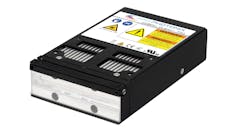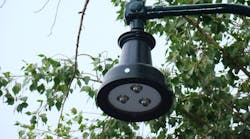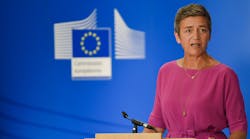The Luminaires v1.0 specification has an effective date of October 1, 2011, at which time it will replace the existing Residential Light Fixtures (RLF v4.2) and Solid State Lighting Luminaires (SSL v1.3) specifications.
EPA released Draft 1 of the ENERGY STAR Luminaires v1.0 specification on May 10, 2010, followed by Draft 2 on October 4, 2010, and the Final Draft on December 20, 2010. A series of minor edits have been incorporated into the final specification document as a result of stakeholder feedback on the Final Draft and follow-up discussions.
The Luminaires v1.0 specification separates fixtures into either directional or non-directional, with separate criteria for each. There is no differentiation by light-source technology, or by indoor or outdoor. Directional lighting is defined as involving luminaires that distribute 90 to 100 percent of the emitted light in the general direction of the surface to be illuminated (the term usually refers to light emitted in a downward direction).
Crucially, directional luminaires are evaluated by luminaire photometry (lumens delivered from the luminaire per input watt) while non-directional luminaires are evaluated by light-source photometry.
Inseparable SSL luminaires, in which there is no LED light engine or module that can be replaced or upgraded by the user, must be evaluated as directional luminaires requiring luminaire photometry.
Eligible directional-luminaire types defined in the specification include residential-grade luminaires, such as accent lights, cove mounts, downlights, outdoor post-mounted luminaires, under-cabinet luminaires and all inseparable SSL luminaires. Commercial-grade directional luminaires include accent lights, downlights, under-cabinet task lights and portable desk task lights.
The list of non-directional categories includes residential-grade luminaires only. Examples include chandeliers, bathroom vanity lights, ventilation fan lights, external security lights and several more. Luminaires not classified as directional in the specification will default to the non-directional criteria.
For potential future revisions of the Luminaires spec, EPA says it is continuing to follow the development of new industry standards, including:
- New methods to measure and project lumen maintenance at the end-use product level (luminaire or lamp).
- New metrics for color rendering.
- New performance standards for dimming, and for solid-state drivers.
- New methods of measurement and recommended practices regarding the operating frequency of SSL products.
- Updated methods of measurement of audible noise from lighting products.
EPA says it is also currently reviewing existing requirements governing the use of IES LM-80 test reports and is gathering input from LED manufacturers to determine what improvements should be made.
Anyone with questions or concerns about the Luminaires specification can contact Alex Baker, the EPA’s Energy Star Lighting Program Manager or Kate Buck at ICF International.




